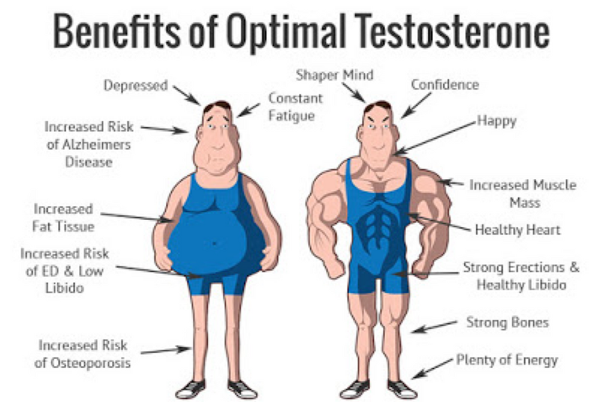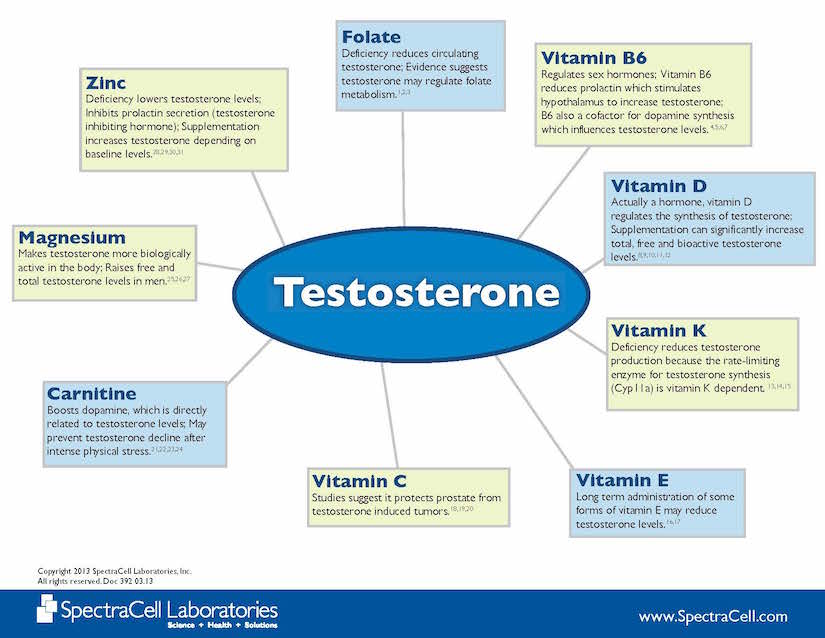How to Achieve Ideal Testosterone Levels in Men? Nationwide, an estimated 15 million men age 45 and older suffer from Low T. Just what is Low T? Low T is Low Testosterone. After age 30, serum testosterone in men declines approximately 1% to 2%, annually. This is a serious situation. Low testosterone levels lead to a significant decline in overall health. Often, as a result, erectile dysfunction can develop.

Men with diabetes and men who are overweight are more than twice as likely to have low testosterone (Low T) compared to other men. It is estimated that fewer than ten percent of men with the condition are currently receiving treatment. So, how to achieve ideal testosterone levels in men?

Low T can also be affected by other medical conditions, not just diabetes. High blood pressure, asthma, and COPD can also affect testosterone levels. Symptoms of Low T can include a low sex drive, erectile dysfunction, depression and fatigue. Low levels of testosterone can also contribute to higher body fat, reduced muscle mass, an increased risk of Alzheimer’s disease and decreased bone mineral density. Therefore this condition is not just isolated to libido, but impacts many aspects of one’s health. So, how to achieve ideal testosterone levels in men?
How is Low T Diagnosed?
Low T can be easily diagnosed with a simple blood test. In the conventional medicine world (in order to get insurance reimbursement for treatment), low T is defined as a total testosterone (TT) level of ≤300 ng/dL. However, you do NOT have to be at this level to have the symptoms of low testosterone. And thus you should not have to suffer due to these irrelevant reference ranges. For many men, a level of ≤500 ng/dL is considered to be low and would warrant testosterone supplementation, especially, if the man is experiencing any of the above symptoms or health conditions. Keep in mind that a 20-year old man may have testosterone levels of 1000 ng/dL or higher. A testosterone level of <500 ng/dL for that same man in their 50s could significantly begin to impair his health, and therefore warrant supplementation.
Because the secretion of testosterone is diurnal, it should be measured in the morning, usually between 8:00 AM and 11:00 AM. When we test testosterone, we also test lutenizing hormone (LH) and follicle-stimulating hormone (FSH). If there is a deficiency of testosterone, LH and FSH can help us determine if the testosterone deficiency is primary or secondary. In other words, it helps determine the cause of the Low T. An elevated LH and FSH suggest a primary cause (lack of testosterone production by the testes). A low or low-normal LH and FSH suggests a secondary cause (a dysfunction of the hypothalamus and/or the pituitary gland causing failure to secrete LH, FSH or gonadotropin-releasing hormone). If secondary, a prolactin level should also be drawn to rule-out a prolactinoma, a common form of a tumor that secretes prolactin. How to achieve ideal testosterone in men can be a challenge.
The more severe form of Low T is considered to be hypogonadism. Hypogonadism is defined as a lack of testosterone production by the testes, as well as lack of adequate spermatozoa. Hypogonadism is considered severe and associated with male infertility. The American Association of Clinical Endocrinologists defines hypogonadism as a testosterone level of < 200 ng/dL.
How Can Testosterone be Replaced?
Testosterone replacement comes in many forms, such as topical gels and creams, intramuscular injections, subcutaneous pellets, transdermal patches and buccally (between the cheek and gums). Regardless of what method used to replace testosterone, frequent close monitoring is necessary. Monitoring includes measurements of hematocrit, PSA, and the prostate itself with an annual digital rectal exam. In those at risk for osteoporosis, a bone density may also be necessary. In those men who want to retain fertility, using exogenous testosterone should be avoided since it can impair spermatogenesis and prevent or reduce fertility. Other options may be available.
However, supplementation with testosterone alone is not the only solution to how to achieve ideal testosterone in men. Lifestyle modification is also effective in improving Low T. It is crucial that treatment also includes proper nutrition, meal management, stress reduction, physical activity, and proper nutrient and herbal supplementation.
Low T may also be due to specific nutritional deficiencies?
What if simply improving your diet or taking the supplements that you are deficient in, were all that you needed (in addition to the other above lifestyle management) to achieve ideal testosterone in men? Check out the display below of all the nutrients that are required for testosterone to be produced, secreted, transported, and metabolized in the body. Determining your nutritional status is ALWAYS the first means of getting to the ROOT CAUSE!
Also, check out our blog post: “5 Foods That Will Boost Male Sexual Stamina.” Still having issues with erectile dysfunction or diminished sexual performance? Learn about the GAINSWave therapy.


